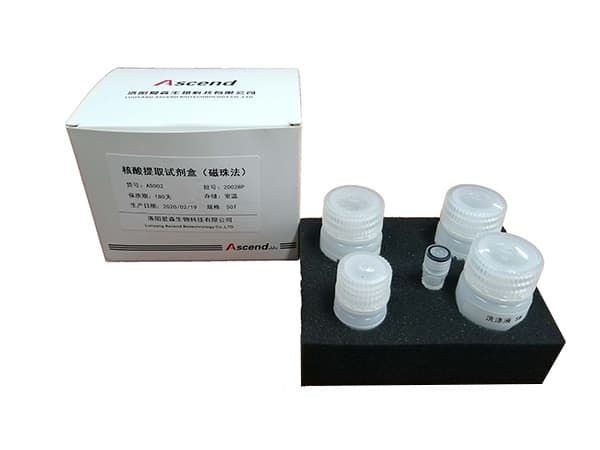How to improve the accuracy of COVID-19 nucleic acid testing?
With the rebound of the COVID-19 epidemic, the demand for nucleic acid testing has increased sharply. However, the accuracy of nucleic acid testing results has attracted widespread attention. The “missing” situation has caused some clinicians and the public to raise questions about the quality of test kits. doubt. So, what are the factors that may affect the current accuracy of nucleic acid detection? As a professional nucleic acid extraction kit supplier, Ascent shared with us how to improve the accuracy of COVID-19 nucleic acid detection from specimen collection, specimen storage and transportation, nucleic acid extraction, and amplification testing.
1. Specimen collection
Correct sampling is the key to the success of the experiment. It is understood that due to the limitation of maneuverability, the most common sampling method is to use nasopharyngeal swabs, sputum or alveolar lavage fluid. The most common method is to collect nasopharyngeal swab specimens. However, the sampling technique of the nasopharyngeal swab will affect the accuracy of the test. It is best to have a trained nurse sample the patient. It is necessary to collect enough effective cells from the patient’s nasopharynx. Inexperienced nurses may not be able to obtain qualified specimens. .
In addition, the nasopharyngeal swabs and preservation solutions used for specimen collection will also affect the quality and preservation of the collected specimens. It is recommended to use sterile flocked swabs that can absorb and release more samples and free of free DNA. The cell preservation solution of enzyme and RNase can better preserve viral nucleic acid and avoid COVID-19 RNA degradation.

2. Specimen storage and transportation
COVID-19 is an RNA virus. Special attention should be paid to the storage temperature and the corresponding length of time when specimens are stored and transported to avoid nucleic acid degradation and false negatives. Specimens should be sent for inspection as soon as possible after collection, and sent to the laboratory within 2h to 4h after collection. Blood specimens should be transported at room temperature, and other specimens should be transported at 2°C to 8°C; if the transport time exceeds 24 hours, the specimens should be stored at -70°C or lower, and short-distance transport should be carried out at 2°C to 8°C. Dry ice transportation shall be used for distance transfer. Avoid repeated freezing and thawing during specimen transportation and storage.
3. Nucleic acid extraction
Nucleic acid testing has high requirements for laboratories, equipment, personnel and reagents. Special PCR laboratory partitions are needed to ensure the accuracy of the test results. Nucleic acid extraction is a crucial step in nucleic acid detection.
The currently approved kit only contains the amplification reagents required for COVID-19 nucleic acid detection, and does not contain nucleic acid extraction reagents. There may be differences in the extraction efficiency of different nucleic acid extraction reagents or nucleic acid extraction systems. It is recommended to use verified extraction methods and extraction reagents for nucleic acid extraction to ensure the accuracy of the test results.
In order to ensure the safety of inspectors and the purity and efficiency of nucleic acid extraction, an automated nucleic acid extraction method based on magnetic bead adsorption can be used. Many authoritative laboratories and related experts recommend using a small-sized semi-automatic nucleic acid extraction instrument, put it in a biological safety cabinet, and complete all the steps of sample loading and nucleic acid extraction in the safety cabinet, which is simple and efficient, and protects the safety of operators.

4. Amplification detection
The nucleic acid detection of COVID-19 mainly targets the open reading frame 1ab (ORF1ab), nucleocapsid protein (N), and envelope protein (E) of the COVID-19 genome. To confirm that a case is positive in the laboratory, the following conditions are met: three targets (ORF1ab, N, E) specific real-time fluorescent RT-PCR test results in the same specimen are more than two (including two) positive. If there is a positive test result for a single target, re-sampling and re-testing are required.
Negative results cannot rule out new COVID-19 infections. Factors that may produce false negatives need to be ruled out, including: poor quality of specimens, such as respiratory samples from oropharynx and other parts; specimens collected too early or too late; improper storage and transportation And processing samples; the reasons for the technology itself, such as PCR inhibition, etc.
Due to the serious spread of the epidemic, the development of COVID-19 nucleic acid detection kits and emergency approval are urgent. There may be insufficient clinical sample verification data in the early stage, and there is a risk of insufficient sensitivity and specificity optimization. The reagent performance and positive detection rate of different manufacturers are different. Most kits only detect the two targets of ORF1ab and N gene, and the single target positive results of some reagents account for more than 20% of the positive results. For single target positive results and suspicious results, it is recommended to use different kits for review, or send CDC for confirmation, but it will increase the workload and delay the diagnosis time. From the public information, the currently approved reagents do not contain UNG enzyme and dUTP anti-pollution system, and there are risks of contamination and false positives.



